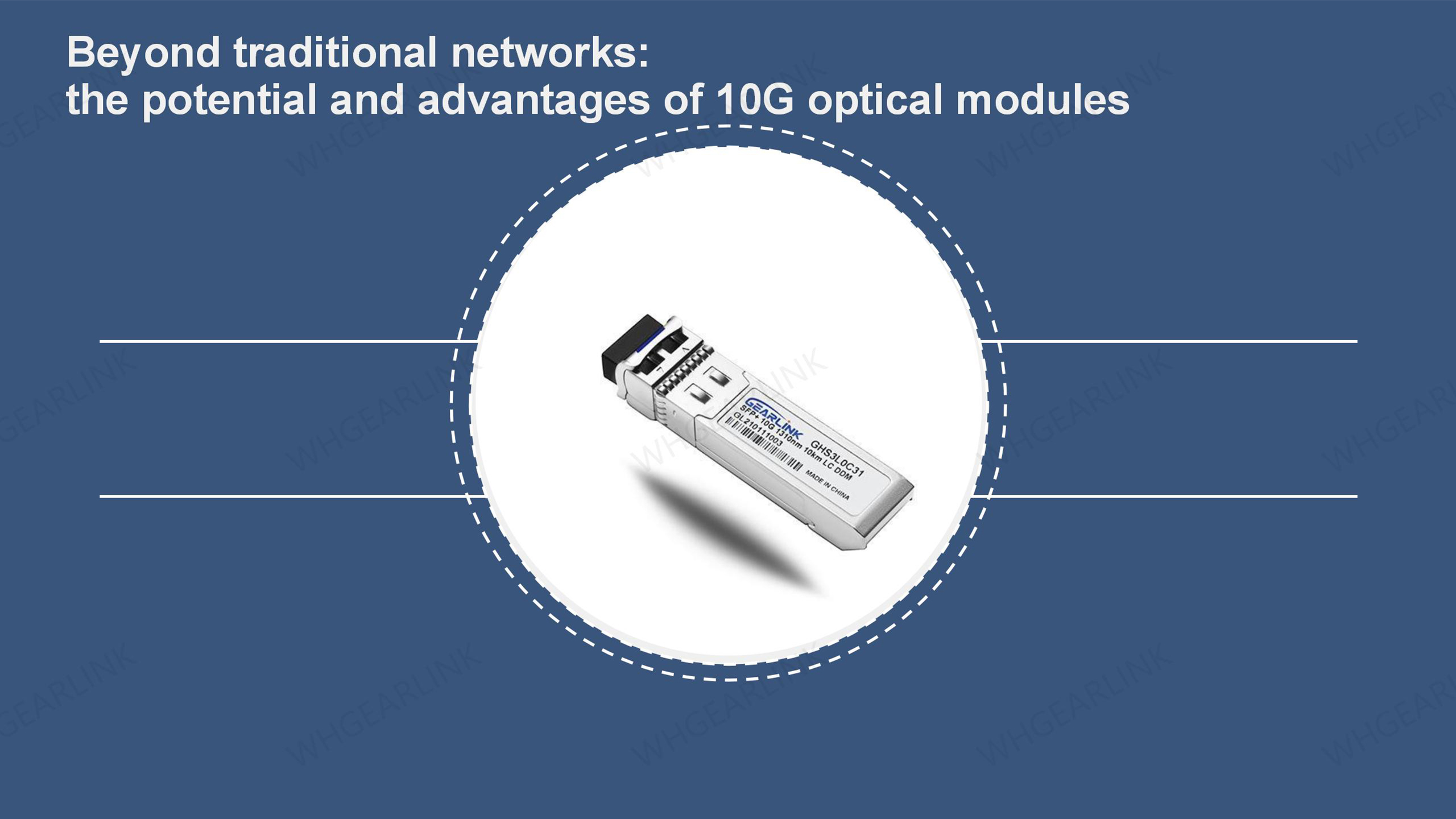This article will analyze the parameters and industry statistics of 10G optical transceivers to illustrate the potential and advantages of 10G optical transceivers in network transmission, including higher speed, larger capacity, lower latency, etc. At the same time, this article also discusses the application prospects of 10G optical transceivers and explains its advantages in data centers, cloud computing and other fields. It aims to provide guidance and reference for readers to deeply understand the potential and advantages of 10G optical transceivers.
This article will analyze the parameters and industry statistics of 10G optical transceivers in detail, explore its potential and advantages in network transmission, and its application prospects in data centers, cloud computing, and other fields.
First of all, 10G optical transceivers have the advantage of high speed. Compared with traditional Gigabit optical transceivers, the transmission rate of 10G optical transceivers reaches 10Gbps. This means that 10G optical transceivers can provide higher network bandwidth to meet the needs of high-bandwidth applications such as large-scale data transmission and high-definition video streaming. For scenarios such as data centers and cloud computing that require processing large amounts of data, the high speed of 10G optical transceivers will improve network performance and user experience.
Secondly, 10G optical transceivers have the advantage of larger capacity. As network applications grow, the demand for transmission capacity is also increasing. 10G optical transceivers provide greater capacity and can achieve multi-channel parallel transmission, greatly improving the transmission capacity and efficiency of the network. This is very important for data processing in large-scale data centers and resource allocation of cloud computing platforms to meet the growing transmission needs.
In addition, 10G optical transceivers have the advantage of lower latency. In many application scenarios, reducing network latency is a crucial requirement. The 10G optical transceiver achieves lower transmission delay by using advanced transmission technology and optimized protocols. This will improve the performance of real-time applications, such as online gaming, high-frequency trading and video conferencing, allowing users to achieve faster response times and a smoother experience.
10G optical transceivers have broad application prospects in many fields. Especially in the fields of data centers, cloud computing and high-performance computing, the advantages of 10G optical transceivers have been fully utilized.
In data centers, with the rapid development of big data and artificial intelligence, the demand for network transmission speed and capacity continues to increase. 10 Gigabit optical transceivers can provide high-speed, high-capacity data transmission to meet the data center's needs for high-performance networks.
In the field of cloud computing, the rapid growth of cloud services has put forward higher requirements for network transmission. 10G optical transceivers can achieve network connections with larger bandwidth and higher transmission rates, and provide stable and efficient cloud computing services.
To sum up, 10G optical transceivers have the potential and advantages to surpass traditional networks. It has higher speed, larger capacity and lower latency, and can meet the needs of large-scale data transmission and high-bandwidth applications. In data centers, cloud computing and other fields, 10G optical transceivers have broad application prospects. Enterprises can choose appropriate 10G optical transceivers based on their own needs and network environment to improve network performance and application experience.


